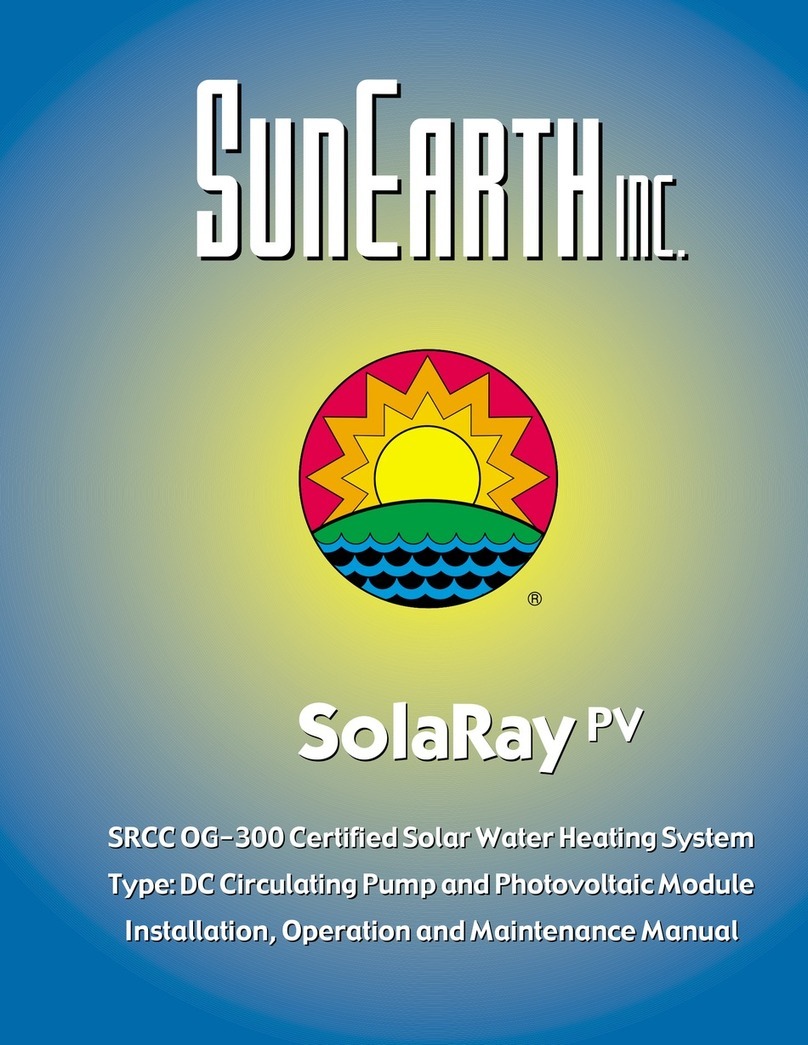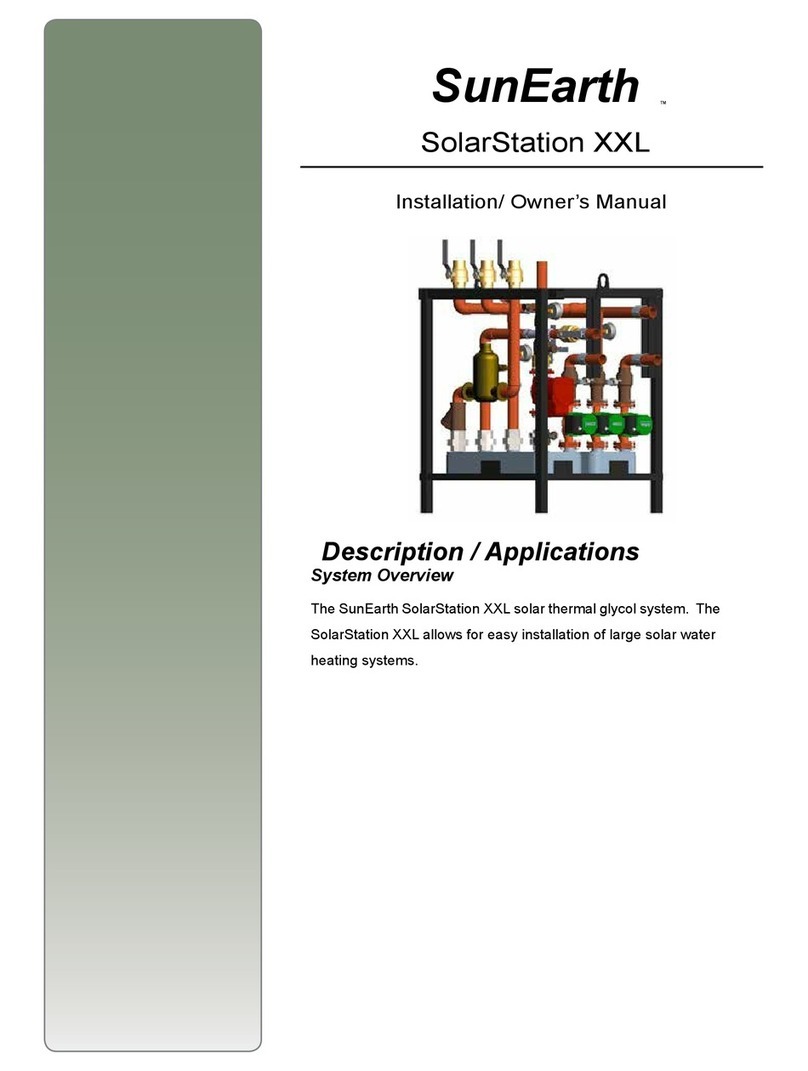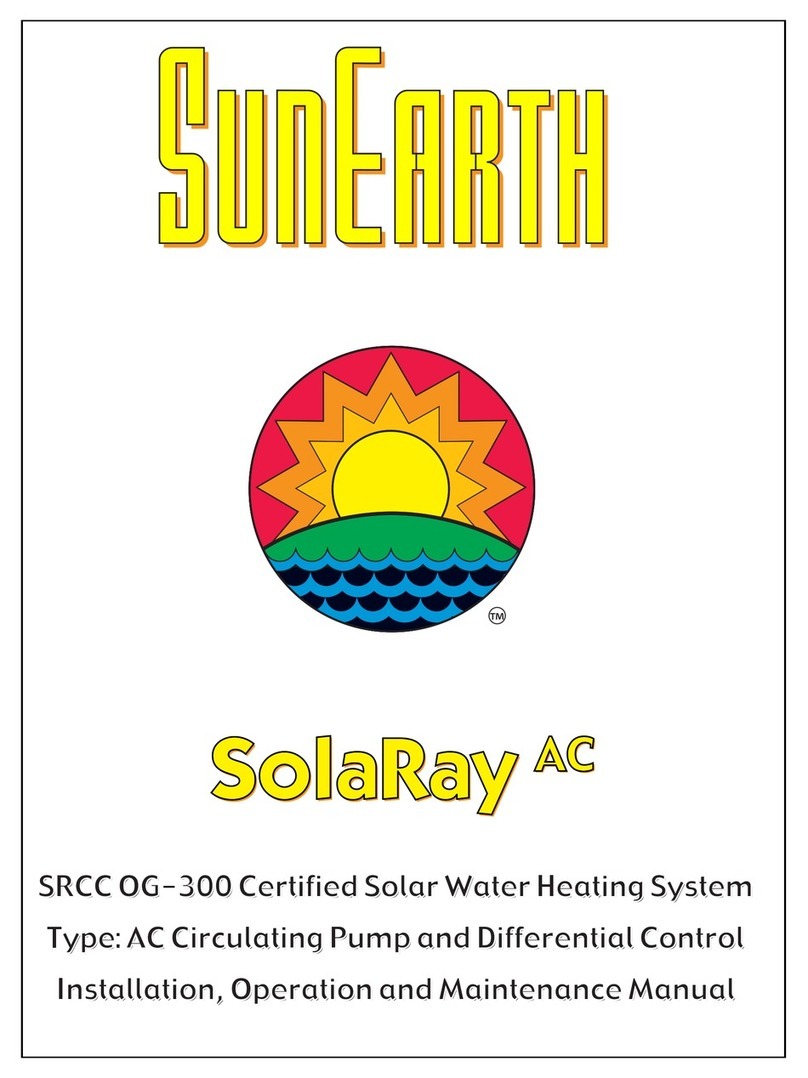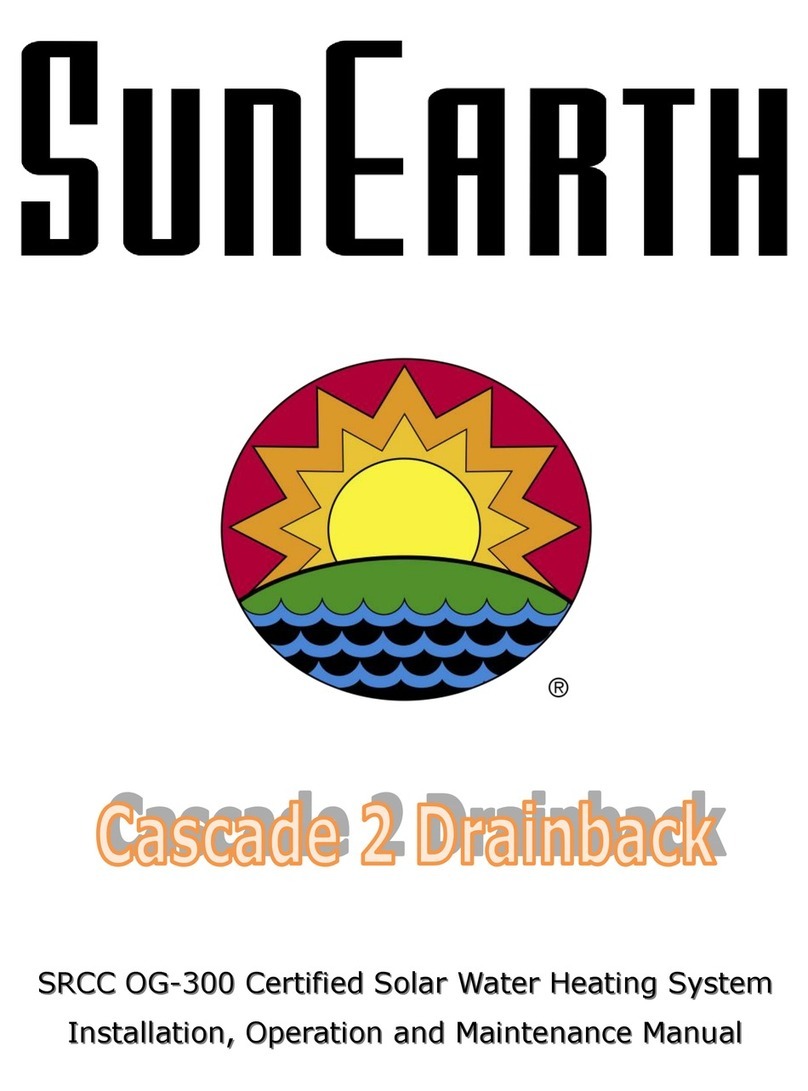
PREFACE
Let us first offer two words of grateful apprecia-
tion. Thank You! We sincerely appreciate your
business. SunEarth also wishes to say thank
you for “going solar”. Solar water heating sys-
tems help to reduce our nation’s dependence on
polluting fossil fuels, minimize the greenhouse
gas emissions associated with conventional
water heating and, very importantly, lower your
monthly utility costs.
Established in 1978, SunEarth is a leading U.S.
solar equipment manufacturer. Our products
include industry standard Empire, SunBelt,
Imperial and ThermoRay solar water heating
collectors, CopperHeart integral collector stor-
age systems, SunSiphon packaged thermosi-
phon systems, SunBurst all copper absorber
plates, SolarStrut and RexRack mounting hard-
ware. We also build specialty collectors for
unique architectural and building applications.
SunEarth SRCC OG-300 certified solar water
heating systems are sold by leading solar,
plumbing and building contractors throughout
the United States.
Your SolaRay 2 solar water heating system has
been designed to meet exacting SRCC OG-300
certification requirements. The components
found in your system have been selected by
your installation contractor for their proven
reliability, longevity and performance in your
specific region of the country.
SunEarth maintains a policy of continuous
review and improvement to ensure that SolaRay
2 systems incorporate any appropriate tech-
nological advances. To ensure that products
represent the current state of the art in solar
water heating SolaRay 2 systems are subject
to change without notice. Please consult the
SunEarth website at www.sunearthinc.com for
current information and latest manual revisions.
1) INTRODUCTION
Solar water heating systems are climate and
site specific appliances. Different types of
solar systems are installed around the world
in accordance with regional weather and water
quality conditions. System performance varies
as a function of the household hot water load,
including daily showers, laundry and kitchen
uses, average ground water and ambient air
temperatures, the home’s roof pitch and ori-
entation, and, of course, the seasonal intensity
of solar radiation. These variables, some of
which change from home to home on the same
neighborhood street, will determine how much
energy and money your SolaRay 2 system will
save on an annual basis.
Your SolaRay 2 solar system is known as a
“forced circulation” system because it utilizes
a mechanical pump to efficiently circulate the
propylene glycol heat transfer fluid (HTF)
throughout the system. The HTF protects the
collector piping from freezing and inhibits scal-
ing deposits that can reduce performance in
“open-loop” systems utilizing potable water as
the HTF. Proper application and maintenance
of the HTF can protect your SolaRay 2 solar
water heating system to minus 60° Fahrenheit.
This manual is intended as a basic solar water
heating primer. Our goal is to familiarize you
with the proper installation, operation, and
maintenance of your SolaRay 2 solar system.
This system is required to be installed by prop-
erly licensed solar or plumbing contractors in
accordance with SRCC Standard OG-300 and
all applicable national, state and local codes,
ordinances and regulations governing solar
water heating installations, as well as good
trade practices. Failure to follow the proce-
dures and practices described in this manual
may void the manufacturer’s warranty for spe-
cific component parts.
This manual covers installations utilizing one
or two SunEarth solar collectors with a single
solar storage tank and also two tank systems
that include a solar storage tank and supple-
mental tank type or tankless water heater.
For simplicity, the singular form will be used
throughout this manual when referring to all
of these components and system permutations.
Frequent reference is made throughout this
P.3































